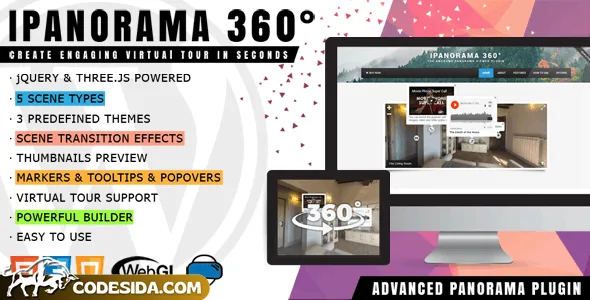iPanorama 1.8.0 360° 1.8.0 - Virtual Tour Builder for WordPress revolutionizes the way businesses showcase their properties by offering an immersive virtual tour experience directly within WordPress.
🌐 Key Features
1. Seamless Integration with WordPress
Effortlessly embeds 360° panoramic tours into your WordPress site, enhancing user engagement.
Ensures a smooth and professional presentation of your property.
2. High-Quality 360° Images
Captures stunning, high-resolution panoramas that accurately represent your space.
Creates an interactive experience for potential clients and visitors.
3. Easy Editing and Customization
Allows for intuitive editing of tours, customization of text, and addition of multimedia elements.
Empowers you to tailor the virtual tour to your brand's unique selling points.
4. SEO-Friendly Design
Incorporates SEO best practices, making your property more discoverable online.
Increases organic traffic and leads through enhanced visibility.
5. Mobile Responsiveness
Optimized for viewing on various devices, ensuring a consistent user experience.
Makes your property accessible to a wider audience, regardless of device.
🔬 Technology Stack
Leverages the robust capabilities of WordPress, PHP, and JavaScript to deliver a seamless user experience.
The software utilizes advanced image processing algorithms to create realistic 360° views.
🔍 What’s New in Version 1.8.0
Introduces enhanced image processing for more realistic and immersive tours.
Offers improved customization options for a more personalized tour experience.
🏠 Ideal For
Real estate agents seeking to showcase properties with a competitive edge.
Property managers aiming to attract tenants and visitors with an interactive tour.
Businesses looking to expand their online presence and attract more clients.
🛠️ Installation & Requirements
Ensure your WordPress version is up to date and compatible with the latest PHP version.
Follow the installation guide provided to integrate iPanorama 1.8.0 360° into your WordPress site.
No additional server-side configuration is required; the plugin is designed to be self-contained.
Check the plugin's documentation for detailed setup instructions and troubleshooting tips.
